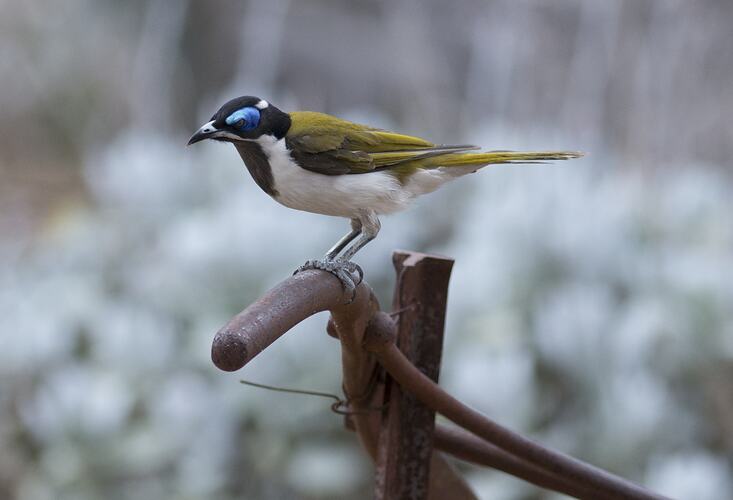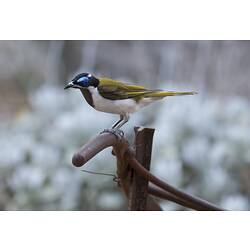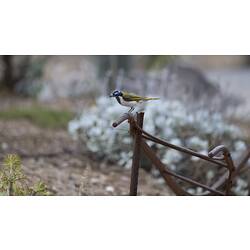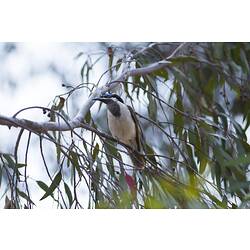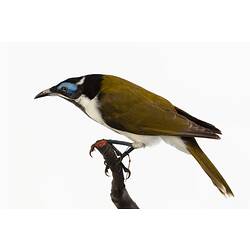General Description
A large black, white and golden olive-green bird with striking blue skin around the eye. The crown, face and neck are black, with a narrow white band across the back of the neck. The wings are a golden olive green, and the underparts are white, with a grey-black throat and upper breast. Juvenile birds are similar to the adults, but the facial skin is yellow-green and the throat is a lighter grey. Size up to 32 cm. Call a repeated, penetrating call of 'woik'; 'weet weet weet' at daybreak; or a softer 'hwit hwit' or squeak uttered in flight.
Biology
One of the first birds heard calling in the morning, often calling 30 minutes before sunrise. It is gregarious and noisy. Usually seen in pairs or small flocks. Is known to feed on nectar, fruits and flowers of native and exotic plants in tropical areas, but feeds mostly on insects and other invertebrates. Generally breeds in pairs, but may sometimes be a cooperative breeder, where immature birds help the main breeding pair to feed nestlings. Most nests are made on the abandoned nests of other birds. Sometimes the nests are not modified, but often they are added to and relined. If a new nest is built, it is a neat round cup of rough bark, lined with finer bark and grass.
Distribution
Northern and eastern Australia
Habitat
Open forests, woodlands, mangroves and coastal heathlands close to water in tropical, sub-tropical and wetter temperate zones.
More Information
-
Animal Type
-
Animal SubType
-
Brief Id
Large black, white and olive-green bird, with blue skin around eyes.
-
Colours
Blue, Green, Black, White, Grey-black, Grey
-
Maximum Size
32 cm
-
Habitats
-
Diet
Insects
-
Diet Categories
Insects, Invertebrates
-
Endemicity
-
Commercial
No
-
Conservation Statuses
CITES: Not listed, FFG Threatened List: Not listed, EPBC Act 1999: Not listed, IUCN Red List: Least Concern
-
Taxon Name
-
Common Name
Blue-faced Honeyeater
-
Other Names
Banana Bird
-
Kingdom
-
Phylum
-
Subphylum
-
Class
-
Order
-
Family
-
Genus
-
Species Name
cyanotis
